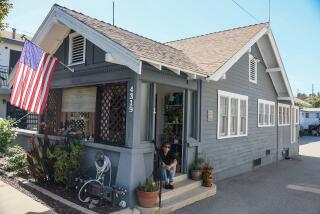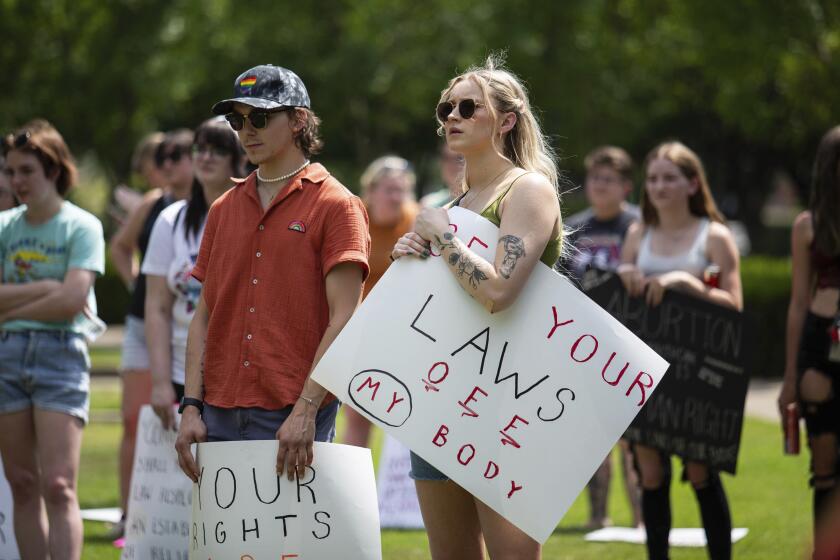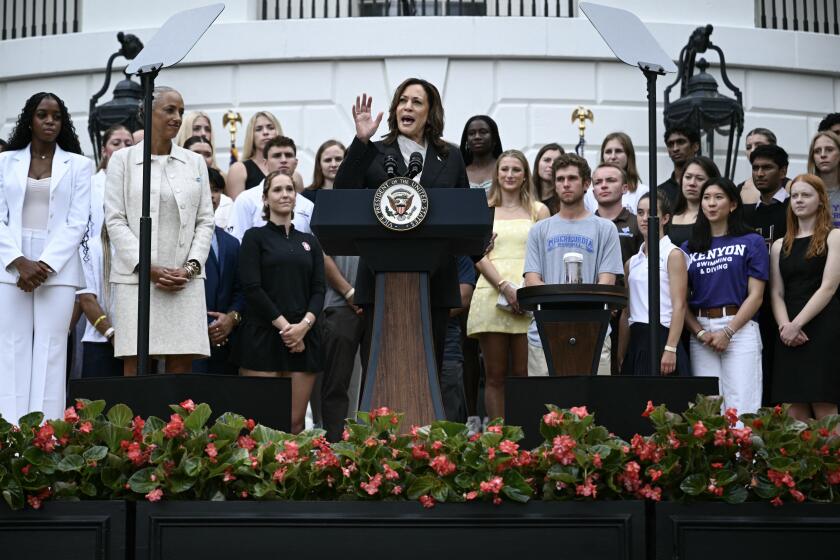Editorial: How to get everyone to agree on a new site for homeless housing in Koreatown? Community buy-in

Three months ago, there was a firestorm of protest over a proposal to build a homeless shelter in the heart of Koreatown. Today, that battle is over, and a tentative agreement on a new site for the shelter has been reached between community leaders, service providers, advocates for the homeless and City Council President Herb Wesson, who represents the area. As best we can tell, this is an example of the system working the way it is supposed to, for the good of the homeless in the community and for the neighbors who live nearby.
Frankly, there wasn’t much wrong with the previously proposed site — a city-owned parking lot on Vermont Avenue — except that its selection stirred outrage from Koreatown activists and business owners who said they had not been consulted before Wesson enthusiastically put it forth.
But Wesson declared himself willing to reconsider, and he spent weeks talking with all the parties, including community groups, about what would be a better location. The talks, facilitated by United Way official Chris Ko, led to the selection of the new site — a triangular snippet of the southern end of Lafayette Park, bordered by Wilshire Boulevard on the north, Hoover Street on the west and Lafayette Park Place on the east. It’s barely in Koreatown, although it’s only about half a mile east of the original site. It’s in Wesson’s district, near the border of Councilman Gil Cedillo’s district. The area around the park is inundated with homeless encampments, which makes it a great place to put a shelter. The plan is to encourage those sidewalk dwellers nearby to move into this shelter.
The goal of these community conversations should be to determine where to put shelters — not to reopen the question of whether shelters are needed.
Winning community buy-in is a good thing in itself. But furthermore, as a result of the talks with the community, other sites have emerged as possible locations for housing. A privately owned site in the area is now being considered for permanent supportive housing. The controversial original site is being looked at as a location for low-income senior housing. And Wesson has offered his district office parking lot for a small shelter that might house 20 people.
Those are all positive outcomes, and they are the result of listening to the community rather than trying to impose solutions from above.
Of course, there are still issues that need to be resolved. Some community leaders are worried — as neighbors often are when they consider living near the homeless — about the people who will move into the shelter. Will they all have mental illness and substance abuse problems, and if so, will that create special kinds of problems for those who live nearby? Some neighbors are worried about security, or about noise. These concerns are understandable, and it is the job of the city and the service providers who will run the shelter to help mitigate them. Wesson has committed to continuing the community meetings so these kinds of questions can be answered.
That’s the way this process should work. It’s challenging to figure out the perfect mix of location, neighborhood and housing for homeless people. Neighborhood groups should be able to ask legitimate questions and offer suggestions to elected officials and service providers.
Enter the Fray: First takes on the news of the minute from L.A. Times Opinion »
But community input is different from NIMBYISM or unwavering opposition. With tens of thousands of homeless people living on the streets, in their cars and in encampments throughout Los Angeles, it is imperative that new housing units and temporary shelters be built. L.A. Mayor Eric Garcetti has urged all City Council members to find locations (sooner rather than later) for shelters where homeless people can stay for several months until they can secure permanent housing. Wesson, to his credit, raised his hand first.
The goal of these community conversations should be to determine where to put shelters — not to reopen the question of whether shelters are needed. Community groups and politicians around the city should take away that lesson from the Koreatown brouhaha. This should not be seen as an invitation to yell at your council member until he or she scotches plans entirely for a shelter.
Shelters are essential all over the city. And that’s just step one, just the interim plan. The ultimate, long-term goal is to build permanent housing for homeless people. City officials must not lose sight of that.
Follow the Opinion section on Twitter @latimesopinion or Facebook
More to Read
A cure for the common opinion
Get thought-provoking perspectives with our weekly newsletter.
You may occasionally receive promotional content from the Los Angeles Times.






